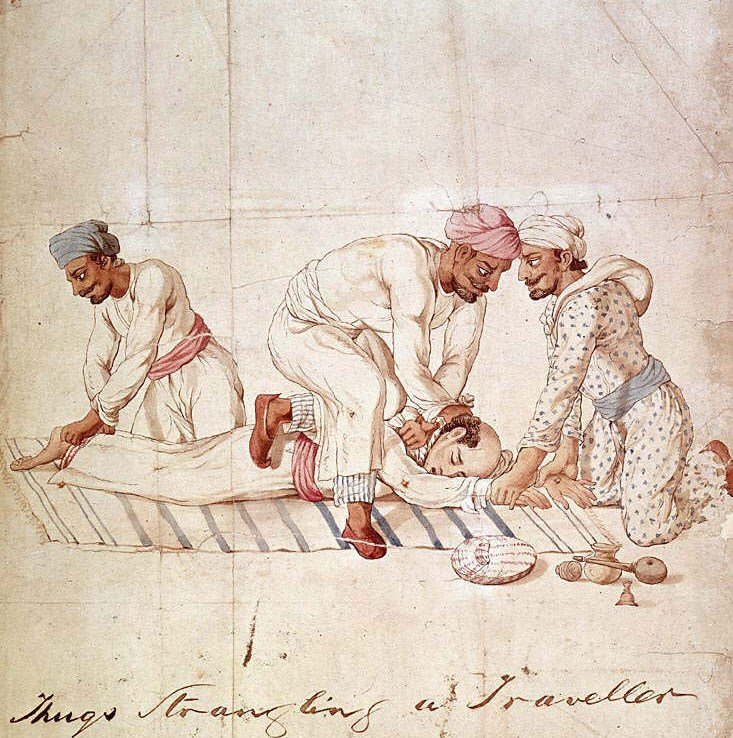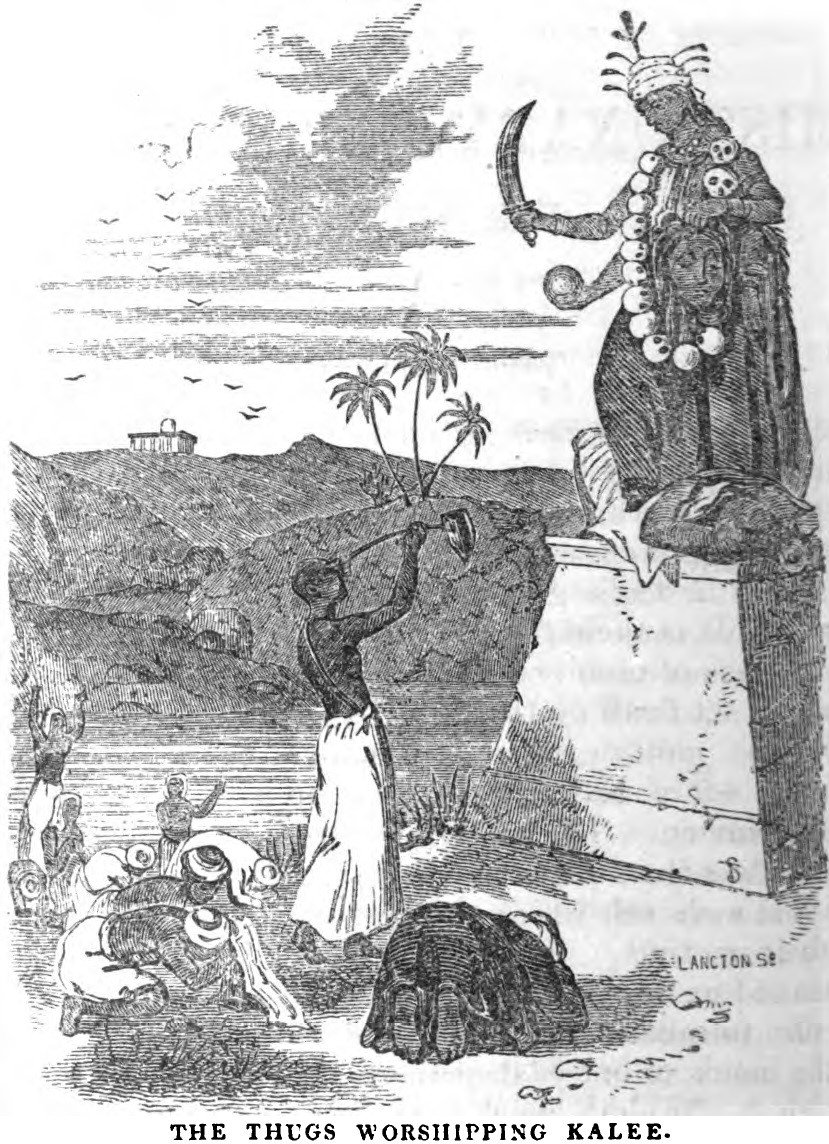The Dark History of Thuggee: The Deadly Indian Cult of Killers
Thuggee, an organized gang of robbers and killers that flourished in the Indian subcontinent during the 1800s, remains one of history’s most intriguing and deadly cults. With an estimated death toll exceeding that of any other known organized group, the Thuggee pose a gripping tale worth exploring.
Origin of the Name and Their Organizational Structure
The term “thug” originated from the Indian word “thag,” which described a person involved in deceitful activities, often including robbery and murder. The Thuggee gangs boasted a well-organized hierarchy with ranks similar to those of the military. Jamadar held the highest rank, followed closely by Subedar. Individual members referred to each other as “private.”
Modus Operandi and Methods of Killing

Once a target was approached, Thuggee members would charm their way into being trusted. As soon as others appeared from behind, the victim was strangled. While strangulation was their primary method, they also used blades or poison if necessary.
The Most Prolific Killer: Behram
One of the most notorious Thuggee members, Behram, holds the record for being the world’s most prolific murderer. He is said to have strangled 931 people during his reign. During his trial, it was established that Behram killed his victims using a yellow and white cloth to suffocate them.
Thuggee Laws and Loopholes
In Thuggee’s time, a murderer could only be sentenced to death if they shed the victim’s blood. As strangulation did not involve shedding blood, thugs took advantage of this loophole and made it their preferred method of killing.
Thuggee’s Varied Methods and Disguises
Depending on the unit, Thuggee members had varying methods of operation. Some disguised themselves as travelers or Hindus/Muslims to deceive their targets. They rarely carried weapons other than the cloth used for strangulation and avoided confronting victims unless they outnumbered them.
The Role of Women in Thuggee
Female thugs, referred to as “baronees,” preferred keeping their activities discreet. They addressed each other as such while male counterparts were called “baroos.”
Children and the Thuggee Code of Ethics
While they had no qualms about killing victims, thugs held a soft spot for children. They rarely killed them and instead adopted them. However, they did not hesitate to kill women and their children if they believed it was necessary to eliminate witnesses.
The Use of Datura: A Sacred Plant
Before going on their missions, thugs smoked Datura, a poisonous sacred plant, for its deliriant properties. It helped them commit killings without remorse and gave them the audacity they needed.
The Goddess Kali: The Protector of Time, Death, and Doomsday

Those practicing Thuggee considered themselves the children of Kali, the great Hindu goddess responsible for controlling time, death, and doomsday in Shaktism. They often prayed to her.
Origins and Reign of Thuggee: The World’s First Mafia
Thuggee, also known as the Thugs, existed between the 13th and 19th century, terrorizing people in the Indian subcontinent. The first organized Thuggee group appeared around 1356, with the majority of members hailing from seven Muslim tribes.
The Impact of British Colonization on Thuggee
Thuggee’s reign came to an end when the British expanded into their territory in the mid-1800s. It is estimated that thugs killed more than 30,000 people primarily targeting travelers as sacrifices to their goddess Kali.




